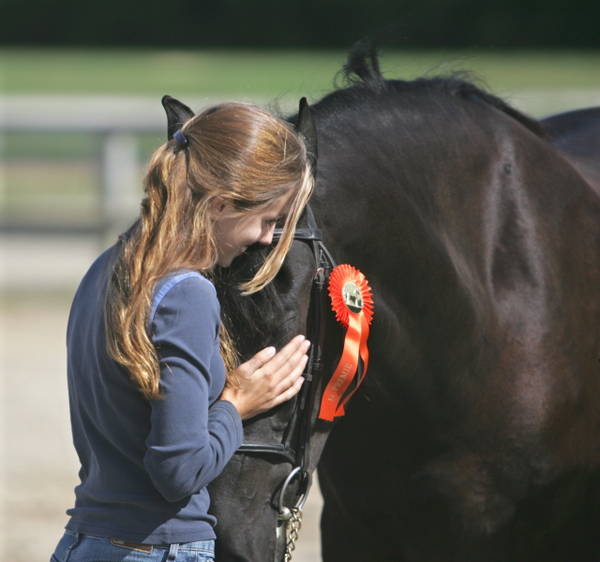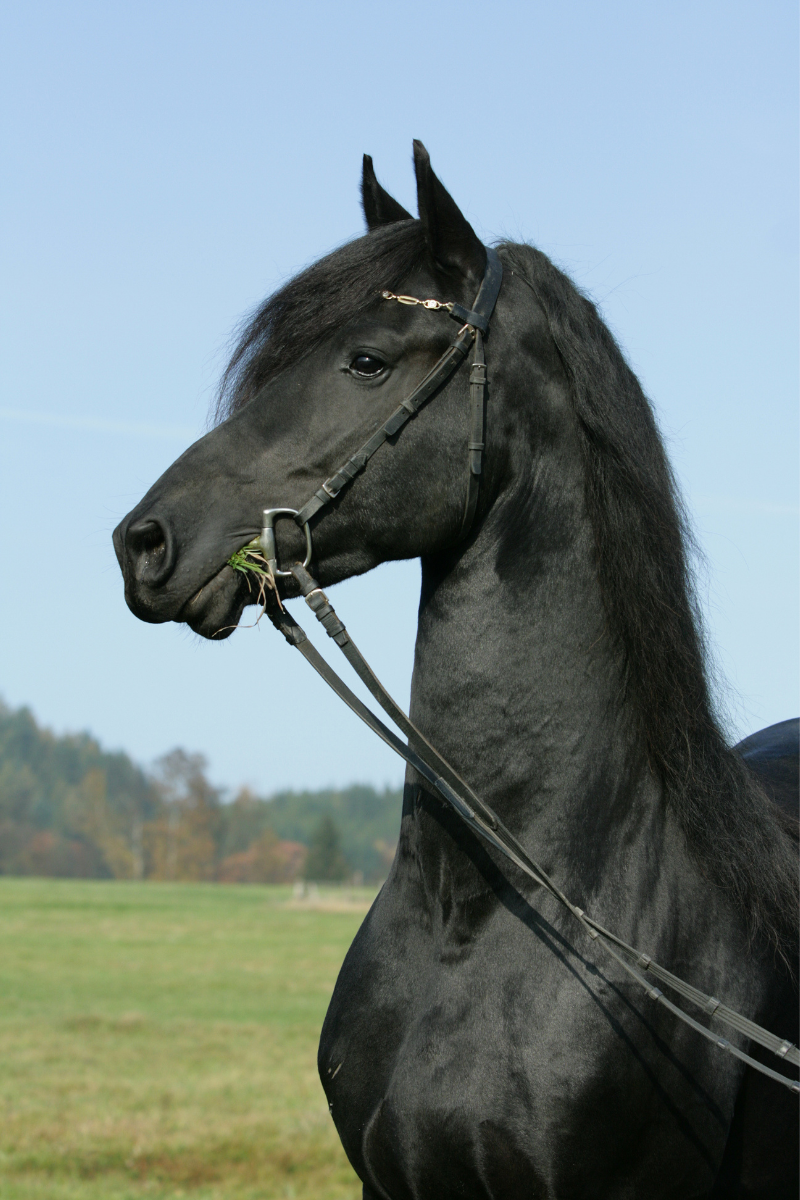You will undoubtedly find a mix of purebred and crossbred Friesians in a quick online search for Friesians for sale. It can be confusing because of the similarities between the two, cross breeder’s conflicting logic, and the actual breed standard. So here are some differences, red flags, and misconceptions surrounding this beautiful breed.
Friesian Horses have been around for over 1,000 years; with an iconic build, these horses stand between 15-18 hands tall with a smooth black coat with a very long mane, tail, and “feathers” flowing along their legs over their hooves. Originating in Friesland Netherlands, these horses would be bred over the centuries with other breeds such as the Andalusian and have input on bloodlines such as the Fell Pony, Dales, and Shire. These horses could carry fully armored knights into battle with a muscular baroque build and large bone stature. Known for their high step and smooth trot, the modern Friesian is found excelling in dressage and in harness pulling carriages.
Why is Friesian Breeding so Regulated?
Frisians were nearly brought to extinction in the 1900s, with less than 500 total horses and a handful of suitable stallions. With this relatively small gene pool, this is an important history as it paints a picture as to why the breeding of this horse is so regulated to this day. The Koninklijke Vereniging, or the (KFPS) is an international studbook with at least 12,000 members of which almost half are located outside of the Netherlands. They define themselves as, “The oldest studbook in the Netherlands and promotes the interests of the Friesian horse in the broadest sense of the word. The KFPS has realized this by the meticulous registration of Friesian horses since it was founded in 1879. In addition, the KFPS has established a breeding program to maintain and further refine the unique characteristics of the Friesian horse.”
To enforce these standards, you can only breed your mare to certain “Approved Stallions” these horses are the pinnacle of the breed standard and go through a lifetime of training and maintenance to hold this high honor. Upon birth, one must register their Friesian with a breeding certificate signed by both the mare owner and the stallion owner at time of breeding along with a 4-generation pedigree with registered names, numbers, and registry they are from; or DNA proof of purebred parentage from both parents to be used to confirm with the DNA of the horse being registered. This is an effort to maintain the breed standard and not allow cross-bred horses to dilute the bloodlines they have worked to preserve.
Positives of this are many; with a highly regulated system built around the betterment of the breed, Friesians have come leaps and bound since their near-collapse in the early 1900s to the modern-day icon it is today. Some would say a negative is this makes the standard so high it is unapproachable for many to afford or achieve. This is where cross breeders see opportunities. Crossbreeding Friesians with other breeds, can produce some great traits, but often these breeders are motivated by money rather than the betterment of the breed. This also creates a lot of confusion for people new to the breed. So, we’ve created a list of things to look for when you are searching for Friesian horses for sale.
What to look for when looking for a Friesian horse for sale
- Friesians are always black. Not brown, not multi-colored.
- When you see these colors, you know this horse is either not a pure bred Friesian, or this horse has not met the breed standard because of a “chestnut factor”.
- Friesians have large bones and muscular builds, with powerful legs and large muscular necks. Legs that are thin and long with tiny hooves can indicate crossbreeding.
- Hot temperaments and aggressiveness are also not common among this breed. The friendly and curious nature of these horses is a notable breed characteristic.
- White markings are a hot topic among breeders, with a center star circle in the middle of their forehead being the only place on their body allowed to have this color.
- If a pure-bred Friesian has white markings, they are allowed to register their foal in the foal book. However, this horse cannot move into the studbook, and their offspring cannot be registered.
Also, always consider where you are seeing the horse for sale. Is this a reputable breeder?
These rules often seem strict and unfair, but these decisions have helped shape the breed to their high standard we have today.

I’ve been around horses my entire life, but my Friesian journey started just over 20 years ago. Our horses have always been a part of our family. They have traveled with us as we relocated from Vermont to New York to Iowa and finally, to Arizona. I can’t wait to share our story with you!
Related
Jun 20, 2022
Friesians for Sale – What you need to know

Leave a Reply Cancel reply
@starlitridgefriesiansandfells
LET'S BE FRIENDS ON INSTAGRAM